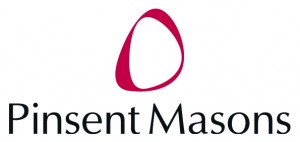4 September, 2016
One Belt, One Road, also known as Belt and Road or more properly as the Silk Road Economic Belt and 21st Century Maritime Silk Road initiative, is a development strategy that focuses on land and sea based connectivity from China to major markets in Europe, Asia and the Middle East.
This is part of our series analysing China's One Belt One Road infrastructure investment programme. For more, sign up to request Pinsent Masons detailed region by region guide to OBOR.
The 'belt' refers to land-based routes, with several 'transport corridors' identified to reach key markets in 64 countries, while the 'road' refers to a maritime route through the South China Sea, South Pacific Ocean and Indian Ocean.
China plans to work with countries along each of these transport routes to finance and deliver projects, with a focus on energy and transport infrastructure.
The policy was first outlined in 2013 by Chinese president Xi Jinping during a state visit to Kazakhstan, and work began on the first related projects in 2015. Belt and Road policy is managed by China's National Development and Reform Commission, the Ministry of Foreign Affairs and the Ministry of Commerce, and overseen by the State Council.
Specific details are still emerging of which projects will be included in the initiative in the countries that China has identified as its partners. While many projects are being described as related to OBOR, official documents have refrained from specific details, leaving it open to future development. This approach may well be by design, in order to allow flexibility in implementation across the very different economic and political landscapes along its routes. The details of OBOR implementation are finding definition in the significant number of infrastructure projects that are either already under way or in development.
One fact is important to note, however: the OBOR initiative is not an aid package, nor a foreign direct investment policy, but a lending plan. Chinese financial institutions are offering loans to the governments of the countries along the OBOR 'corridors', to help develop infrastructure that will in turn help China to connect with new markets.
In this respect China also led the development and launched two new financial institutions in 2014: the Asian Infrastructure Investment Bank (AIIB) and the Silk Road Fund.
The AIIB is a multilateral development bank led by China and located in Beijing. It was set up with the aim of boosting investment in infrastructure in Asia and was established formally by the 57 member countries signing the Articles of Agreement in June 2015. The AIIB is expected to have initial capital of close to US$100 billion to invest in infrastructure projects and will be financed by individual country contributions proportionate to their economic size.
The Silk Road Fund was launched in December 2014 with total capital of $40bn, specifically to fund OBOR projects. It is jointly funded by the State Administration of Foreign Exchange, the China Investment Corporation, the Export-Import Bank of China and the China Development Bank.
In addition to this, other sources of funding for OBOR projects have been created by some of China's largest state-owned institutions, including CIC, Bank of China, CITIC Corporation and others.
The opportunities for non-local and non-Chinese businesses to get involved in OBOR projects vary from region to region, and will depend on the extent to which Chinese contractors take on the work with financial backing from the Chinese government. There is likely to be opportunity, however, in legal, financial and technical consultancy in many areas, and potentially in joint ventures with local and Chinese partners.
Pinsent Masons has worked with The Economist Corporate Network to produce a guide to the policy, to the countries likely to be involved, and to potential opportunities and challenges in each. The report looks at 44 countries across Africa, Central Asia, Eastern Europe, the Middle East, Russia, South Asia and South-east Asia, and at infrastructure needs and plans in each. Individual country profiles also take a look at the political conditions in each, and their likely impact on infrastructure investment.
For further information, please contact:
Ian Laing, Partner, Pinsent Masons
ian.laing@pinsentmasons.com





